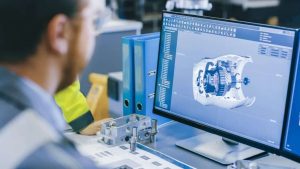
Vacuum molding has one particular goal in mind: to cast away air bubbles from silicone resins when you create a product. It also punches back by using an air bubble to create the surface of the casting that makes the mold we are going to use to create our product. There are many ways to achieve this with different levels of success. We are going to discuss some of them right here:
- Using Pouring Methods
If you are in the workshop working the vacuum casting machine, you have to pay attention to the part where the silicone mold and the casting materials meet. You need to pay close attention as the silicone pours to avoid bubbles as you pour the silicone in the mold. The best way to get this done is by making the pouring process in small intervals, tilting the pouring angle on occasion as you make sure the silicone flows through the whole surface.

- Use Compressed Air in the Silicone Mold
Using an air compressor will work wonders to pop out any air bubbles from the mold. The way to do it is by pouring the first layer of silicone in the mold cast. After that, you blow the excessive material using the compressor and make sure to check it. You will not see a single bubble insight as you pour the second layer.
- Use a Vacuum to Remove the Air from the Mold
Bubbles are so frequent in silicone parts because air gets trapped when you mix the components of the resins you are about to use. There are two simple ways to get rid of this issue. The first one is by stirring the mix of resins slowly. A steady pace will ensure that no air gets trapped in the mix. If there are any, they will probably be small enough for the vacuum chamber to deal with.
- Use Pressure to Force the Air in the Resins
If you are familiar with the principle that a nail is the best way to get another nail out of the way, this technique will be great for you. All you need to do is force air inside the vessel along with the molding silicone, and the pressure resulting from the mix will squeeze out every single air bubble. This is probably one of the easiest methods to avoid bubbles, but it has to be timed. Otherwise, the pressure might damage the mold box.






